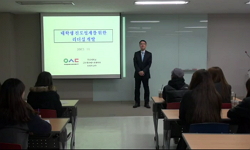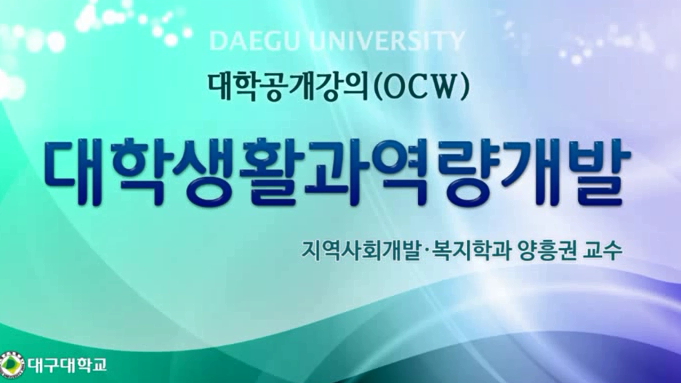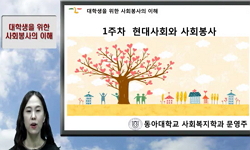This study was conducted on 10 male students; 5 who were exercising regularly 4 days or more weekly with exercise habits as exercise group, and 5 male students who exercise less than once a week without exercise habits as non-exercise group. The purpo...
http://chineseinput.net/에서 pinyin(병음)방식으로 중국어를 변환할 수 있습니다.
변환된 중국어를 복사하여 사용하시면 됩니다.
- 中文 을 입력하시려면 zhongwen을 입력하시고 space를누르시면됩니다.
- 北京 을 입력하시려면 beijing을 입력하시고 space를 누르시면 됩니다.
https://www.riss.kr/link?id=A105984608
- 저자
- 발행기관
- 학술지명
- 권호사항
-
발행연도
2018
-
작성언어
Korean
- 주제어
-
등재정보
KCI등재
-
자료형태
학술저널
-
수록면
993-1002(10쪽)
-
KCI 피인용횟수
0
- DOI식별코드
- 제공처
-
0
상세조회 -
0
다운로드
부가정보
다국어 초록 (Multilingual Abstract)
This study was conducted on 10 male students; 5 who were exercising regularly 4 days or more weekly with exercise habits as exercise group, and 5 male students who exercise less than once a week without exercise habits as non-exercise group. The purpose of this study was to investigate if there is any difference between the locomotive movements of a young adult in accordance with the movement habits, what causes the difference, and to verify what it means from physiological perspective.
While the stride length slightly increased during exercise in both condition for exercise group, the non-exercise group showed a slight increase in 80m walking but decrease in 100m waling(p<.05). During 80m resting/walking and 100m resting/walking, the average heart rate was significantly higher for the non-exercise group than for the exercise group(p<.05). The HR of non - exercise group was significantly higher than that of exercise group in 80m walking(p<.05), and the HR of the non-exercise group kept increasing compared to little change for the exercise group. Also, 100m walking showed the same tendency when walking at 80m(p<.05). 100m walking was significantly higher in non - exercise group than in exercise group during latter trend(p<.05). Especially during 100m waling, the HR was significantly lowered to show a significant difference(p<.05). Both the grip strength and one-legged stand tend to be higher in the exercise group, but the significant difference was recognized. Back muscle strength, knee extension power and sit-ups were significantly higher in the exercise group than in the non-exercise group(p<.05). There was a significant positive correlation between knee extension power and stride change(p<.05, r=.69).
In Conclusion, Considering the effect of age and declining muscle strength and declining strength of modern young adults, the walking problems in youth cannot be avoided. Therefore, it is necessary to strengthen walking ability by deepening the understanding of the problem of walking and exercise regularly from adolescence.
목차 (Table of Contents)
- Abstract
- Ⅰ. 서론
- Ⅱ. 연구방법
- Ⅲ. 결과
- Ⅳ. 논의
- Abstract
- Ⅰ. 서론
- Ⅱ. 연구방법
- Ⅲ. 결과
- Ⅳ. 논의
- Ⅴ. 결론
- 참고문헌
참고문헌 (Reference)
1 釣谷伊希子, "高齢者女性の歩行能力と踵骨骨量の関係" 50 (50): 654-, 2001
2 吉武裕, "高齢者の身体的自立に必要な体力レベルについて" 46 (46): 687-, 1997
3 金子公宥, "高齢者の歩行運動" 10-11 : 729-733, 1991
4 吉武裕, "高齢者の日常生活動作遂行能力と体力の関係" 45 (45): 840-, 1996
5 吉武裕, "高齢者における脚筋力の有酸素性作業能力への影響" 1 : 73-, 1994
6 田井中幸司, "高齢女性の歩行速度の低下と体力" 51 : 245-252, 2002
7 金俊東, "長期間トレーニングを継続している高齢アスリートの筋量と歩行能力の特徴" 50 : 149-158, 2001
8 前田如矢, "運動生理学" 金芳堂 58-61, 1982
9 生田香明, "立つ·歩く動作からみた子どものからだの危機(第18回日本体力医学会近畿地方会)" 53 (53): 368-, 2004
10 近藤正勝, "歩行などの運動習慣は筋量の加齢変化を抑制できるか?" 48 : 263-, 1998
1 釣谷伊希子, "高齢者女性の歩行能力と踵骨骨量の関係" 50 (50): 654-, 2001
2 吉武裕, "高齢者の身体的自立に必要な体力レベルについて" 46 (46): 687-, 1997
3 金子公宥, "高齢者の歩行運動" 10-11 : 729-733, 1991
4 吉武裕, "高齢者の日常生活動作遂行能力と体力の関係" 45 (45): 840-, 1996
5 吉武裕, "高齢者における脚筋力の有酸素性作業能力への影響" 1 : 73-, 1994
6 田井中幸司, "高齢女性の歩行速度の低下と体力" 51 : 245-252, 2002
7 金俊東, "長期間トレーニングを継続している高齢アスリートの筋量と歩行能力の特徴" 50 : 149-158, 2001
8 前田如矢, "運動生理学" 金芳堂 58-61, 1982
9 生田香明, "立つ·歩く動作からみた子どものからだの危機(第18回日本体力医学会近畿地方会)" 53 (53): 368-, 2004
10 近藤正勝, "歩行などの運動習慣は筋量の加齢変化を抑制できるか?" 48 : 263-, 1998
11 小林寛道, "子供の体力と運動能力の発達" 53 : 7-8, 2004
12 加賀谷淳子, "中高年女子の体力と歩行トレーニング; 女子のトレーニング, 日本体力医学会創立 30周年 記念シンポジウム" 28 (28): 208-209, 1979
13 田中秀一, "一定速度歩行において歩数を変化させることによる呼吸·循環器系への影響" 12 : 168-177, 1991
14 島田裕之, "バランス·歩行機能および活動状態が高齢者の転倒に及ぼす影響(【形態·加齢·性差】)" 50 (50): 892-, 2001
15 小田宮章夫, "スポーツ活動経験による運動能力の発達的特性―縦断資料による因子分析的研究―" 26 : 19-28, 1981
16 Murray, M. P., "Walking patterns in healthy old men" 24 : 169-178, 1969
17 Fukagawa, N. K., "The relationship of strength to function in the older adult" 50 : 55-59, 1995
18 Wolfson, L., "Strengthening is a major factor in balance, gait and the occurrence offalls" 50 : 64-67, 1995
19 Lord, S. R., "Sensori-motor function,gait patterns and fall in community-dwelling women" 25 : 292-299, 1996
20 Maki, B. E., "Postural control in the older adult" 12 : 635-658, 1996
21 Spirduso, W. W., "Physical dimensions of aging" Human Kinetic 2005
22 Buchner, D. M., "Evid-ence for a non linear relationship between leg strength and gait speed" 25 : 386-391, 1996
23 O'Loughlin, P. F., "Ankle instability in sports" 37 (37): 93-103, 2009
24 Himann,J. E., "Age-related changes in speed of walking" 20 : 161-166, 1988
25 Gallagher, B., "A fall prevention program for the home environment" 6 (6): 157-163, 2001
동일학술지(권/호) 다른 논문
-
대학 골프 선수의 피로도가 선수생활 극복력에 미치는 영향
- 한국체육과학회
- 박금숙
- 2018
- KCI등재
-
여성노인의 유형별 운동수행이 알츠하이머 치매관련인자, 인지기능 및 낙상관련 체력에 미치는 영향
- 한국체육과학회
- 방현석(Bang, Hyun-Seok)
- 2018
- KCI등재
-
여자 주니어 컬링선수의 신체조성, 하지근력 및 보행능력 평가
- 한국체육과학회
- 이윤미(Lee, Yoon-Mi)
- 2018
- KCI등재
-
케틀벨 트레이닝이 중학교 남자 축구선수들의 신체조성, 하지 등속성 근력 및 무산소성 파워에 미치는 영향
- 한국체육과학회
- 장인영(Jang, In-Young)
- 2018
- KCI등재
분석정보
인용정보 인용지수 설명보기
학술지 이력
| 연월일 | 이력구분 | 이력상세 | 등재구분 |
|---|---|---|---|
| 2026 | 평가예정 | 재인증평가 신청대상 (재인증) | |
| 2020-01-01 | 평가 | 등재학술지 유지 (재인증) |  |
| 2017-01-01 | 평가 | 등재학술지 유지 (계속평가) |  |
| 2013-01-01 | 평가 | 등재학술지 유지 (등재유지) |  |
| 2010-01-01 | 평가 | 등재학술지 선정 (등재후보2차) |  |
| 2009-01-01 | 평가 | 등재후보 1차 PASS (등재후보1차) |  |
| 2008-01-01 | 평가 | 신청제한 (등재후보1차) |  |
| 2007-01-01 | 평가 | 등재후보 1차 FAIL (등재후보1차) |  |
| 2006-01-01 | 평가 | 등재후보학술지 유지 (등재후보2차) |  |
| 2005-01-01 | 평가 | 등재후보 1차 PASS (등재후보1차) |  |
| 2004-01-01 | 평가 | 등재후보 1차 FAIL (등재후보1차) |  |
| 2003-01-01 | 평가 | 등재후보학술지 선정 (신규평가) |  |
학술지 인용정보
| 기준연도 | WOS-KCI 통합IF(2년) | KCIF(2년) | KCIF(3년) |
|---|---|---|---|
| 2016 | 0.66 | 0.66 | 0.67 |
| KCIF(4년) | KCIF(5년) | 중심성지수(3년) | 즉시성지수 |
| 0.66 | 0.66 | 0.593 | 0.18 |




 DBpia
DBpia





